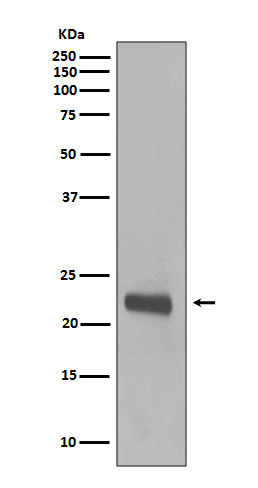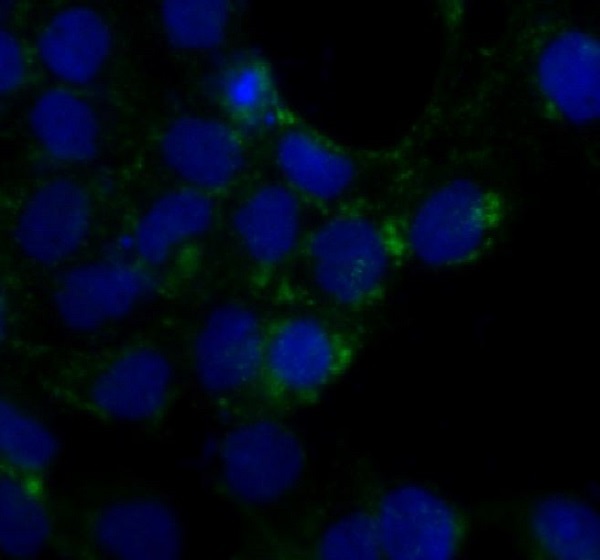


| WB | 1/500-1/1000 | Human,Mouse,Rat |
| IF | 咨询技术 | Human,Mouse,Rat |
| IHC | 1/50-1/100 | Human,Mouse,Rat |
| ICC | 1/50-1/200 | Human,Mouse,Rat |
| FCM | 咨询技术 | Human,Mouse,Rat |
| Elisa | 咨询技术 | Human,Mouse,Rat |
| Aliases | CAV1; CAV; Caveolin-1 |
| Entrez GeneID | 857 |
| WB Predicted band size | Calculated MW: 20 kDa; Observed MW: 25 kDa |
| Host/Isotype | Rabbit IgG |
| Antibody Type | Primary antibody |
| Storage | Store at 4°C short term. Aliquot and store at -20°C long term. Avoid freeze/thaw cycles. |
| Species Reactivity | Human |
| Immunogen | A synthesized peptide derived from human Caveolin-1 |
| Formulation | Purified antibody in PBS with 0.05% sodium azide. |
+ +
以下是3-4篇关于Caveolin 1抗体的代表性文献摘要(信息基于公开发表的研究整理):
1. **文献名称**: "Caveolae and caveolin-1 in cell signaling and cancer"
**作者**: Razani B, et al.
**摘要**: 研究利用Caveolin 1抗体揭示其在细胞膜穴样内陷(caveolae)中的定位,并证明其通过调控EGFR、MAPK等信号通路参与肿瘤发生,为癌症治疗提供潜在靶点。
2. **文献名称**: "Specificity of caveolin-1 antibodies: Analysis using knockout mice"
**作者**: Parton RG, et al.
**摘要**: 通过Caveolin 1基因敲除小鼠模型验证多种抗体的特异性,发现部分商用抗体存在非特异性结合问题,强调了抗体验证在细胞定位研究中的重要性。
3. **文献名称**: "Identification of caveolin-1 as a key mediator of membrane organization"
**作者**: Okamoto T, et al.
**摘要**: 利用自研Caveolin 1抗体首次克隆并鉴定了该蛋白,证明其通过形成膜微结构域参与胆固醇运输和细胞膜稳定性调控。
4. **文献名称**: "Caveolin-1 expression in breast cancer correlates with tumor grade"
**作者**: Williams TM, et al.
**摘要**: 通过免疫组化分析Caveolin 1抗体标记的临床样本,发现其在乳腺癌中表达水平与肿瘤恶性程度呈负相关,提示其作为预后标志物的潜力。
(注:以上内容为基于领域内典型研究的概括性描述,实际引用需核对具体文献信息。)
×